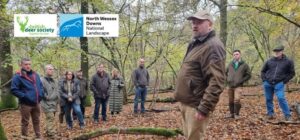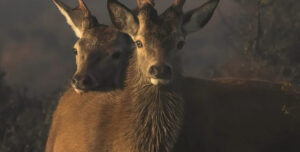ABOUT THE STUDY
Main applicant/Principal Investigator: Dr Sílvia Pérez-Espona (Anglia Ruskin University)
Collaborators: Dr Javier Pérez-Barbería (The James Hutton Institute)
This study aims to assess genetic diversity in the Major Histocompatibility Complex (MHC) in forest and open hill populations of Scottish red deer (Cervus elaphus). The proposed project consisted on genotyping the MHC class II DRB3 exon 2 a total of 48 individuals from two forest (Tarlogie, Inshriach) and two open hill (Strathconon, Abernethy) Scottish red deer populations; 12 individuals from each population (6 stags, 6 hinds). For each individual a total of 48 clones, resulting from the amplification and cloning of the MHC class II DRB3 exon 2, were to be sequenced. This experiment would result in a total of 2,304 MHC sequences (48 sequences per individual) that will allow establishing the minimum number of clones per individual that need to be screened to capture the complete MHC allelic diversity in an individual red deer.
Progress:
Laboratory analysis
The project is progressing satisfactorily with the 24 red deer stags sampled from the four selected populations already analysed (MHC class II DRB3 amplified, cloned and sequenced). For the 24 red deer hinds, the MHC class II DRB3 has already been amplified, all PCR products cloned and currently preparing the samples to be sequenced. The completion of the sequencing is expected to be by the end of February/beginning of March 2015.
Preliminary results
Results from the sequencing of the 24 red deer stags has revealed that genetic diversity at the MHC is high, with the highest number of alleles ever discovered in an ungulate (some individuals presented > 30 alleles). This reflects the importance of conducting thorough analyses, such as the one conducted here, if we are to accurately assess genetic diversity at the MHC. Genetic diversity was high in both forest and open hill populations. Although more detailed data analyses need to be conducted when the hind data is available, the data indicates that some set of alleles are habitat-specific (i.e. only found in either forest or open hill).
Plan of action for year 2
Finalise the sequencing of MHC alleles of 24 red deer hinds (end of February/March 2015).
Data analyses of MHC data (April 2015).
Publication of MHC data (summer 2015).
Article in Deer Magazine (autumn 2015)
FURTHER READING

Deer Management in Protected Landscapes: BDS Together for Deer Best Practice Event with North Wessex Downs National Landscape
Landowners, farmers, conservationists and deer managers came together to learn about sustainable deer management in protected landscapes.

Partnership Announcement: British Deer Society and The Stalking Show
Together, with the help of our community and the fantastic help of the BDS Midlands, Wales and The Marches branch volunteers, we will be supporting the co-founders of The Stalking Show, David and Deanne, to make their 2025 event bigger, better and more memorable than ever before all whilst sharing the mission, vision and values of The BDS with the stalking community across the UK.

Give a Gift of Conservation
This Christmas, give a gift that truly matters—support the conservation of the UK’s wild deer. Learn how donating, gifting memberships, or making purchases through the British Deer Society can create lasting positive change for wildlife, the environment, and future generations. Choose a meaningful gift that goes beyond materialism and helps protect our natural world.










